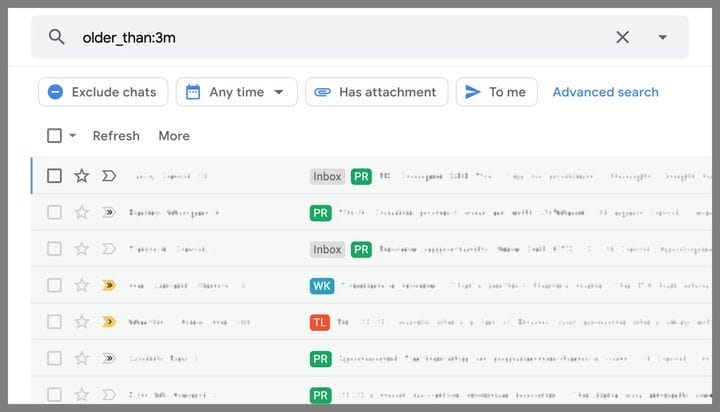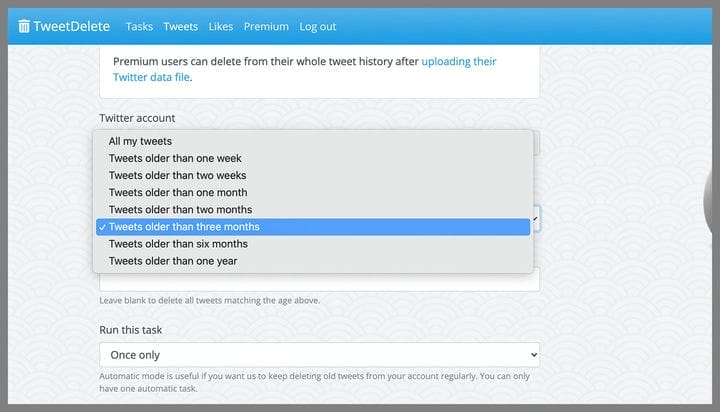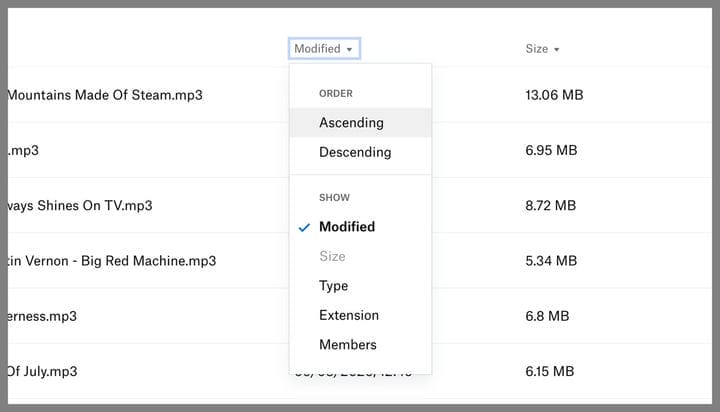If you are a frequent Internet user, there are many reasons to clean up your digital footprints right now. In this article, we’ll show you how.
Everything that gets on the Internet will remain there forever, unless you make an attempt to delete the downloaded one. And even in this case, you will not be able to delete absolutely everything. While there may be benefits to keeping your digital history long-term, such as digging up business emails from 2006 or looking at vacation photos from a decade ago, there are still some things worth deleting as quickly as possible.
Firstly, it will help ensure that nothing from your past can suddenly pop up and confuse you. Second, it will make it harder for advertising companies to track what you do online. And third (at least in the case of files and emails), it will allow you to make room for new things.
If you don’t want decades of tweet and email history, there are ways to limit your digital baggage. Note that this is slightly different from preventing websites and social networks from tracking you while you surf the web, although the two are definitely related.
Emails
Gmail can find emails older than a certain amount of time.
SCREENSHOT: DAVID NILD VIA GOOGLE
With email services now offering so much cloud storage, you might never consider deleting a single email just in case you need it again in the future. But when was the last time you dug through your email archive to find what you needed? Deleting old and unnecessary messages frees up storage space and speeds up the search for important information in the future.
The process for cleaning up your old emails will depend on the client and service you are using. With Gmail, there’s no automatic way to delete old emails, so you’ll need to remember to do this on a regular basis for the future.
In the field at the top of the web interface, you can enter the search term "old_than:" followed by a period of time. Use "old_than: 1y" to search for emails older than a year, or "old_than: 6m" to search for emails older than 6 months.
Among the search results on the screen, you will be able to select all matching messages, then you can check the box in the upper left corner and delete them. If you don’t want to get rid of absolutely everything, combine this with other search terms – so " old_than: 1y is: unimportant" will display all emails older than a year that Gmail marked as low priority. You can find the full list of Gmail search operators here.
If you’re using Outlook, then unfortunately you won’t have the same smart search operators as Gmail. However, you can click on the Filter link at the top of any folder (like your Inbox), then select Sort, Date, and Oldest to find the oldest messages and get rid of them that way. Select the first email you want to delete, then Shift+click the last email you want to delete, then click Delete.
Social media
TweetDelete is one of the best services for automatically deleting tweets.
SCREENSHOT: DAVID NILD VIA TWEETDELETE
Twitter is the social network that you are probably most interested in deleting old messages, and it also offers the most tools to accomplish this task. If you want to keep a copy of your tweets on your computer before you delete them and the Internet, you can download your archive by opening your Twitter settings, and selecting Your Account -> Download Your Data Archive.
The two best automatic deletion tools we’ve found are TweetDelete and Tweet Deleter, which sound very similar and work in a very similar way – they can both automatically delete tweets when they reach a certain age. Tweet Deleter gives you a little more control over which tweets get deleted, and TweetDelete offers more functionality in the free version, so it’s worth giving it a shot to see which one works best for you. To access all available options, TweetDelete costs $15 once, while Tweet Deleter costs $15 per month.
See also: How to delete search history and get rid of Google tracking
We also can’t fail to mention Jumbo for Android and iOS, which can delete old Twitter and Facebook posts once they reach a certain age, keeping them in the Jumbo app for storage. It’s definitely a convenient and easy-to-use option to cover your tracks, and while paid plans start at $9/month, functionality for both Facebook and Twitter is included in the free version.
If you want to clean up old messages easily and quickly, these are not the services to use – you can still delete old messages manually one by one, and you can also use the Snapchat-inspired stories feature on both Facebook and Instagram, where media files automatically disappear after 24 hours anyway.
Files
Dropbox can sort files by date modified.
SCREENSHOT: DAVID NILD VIA DROPBOX
Deleting old files saved in the cloud isn’t so much about protecting yourself from the prying eyes of others as it is about staying organized (and reducing the amount of money you have to spend on cloud storage each month). Not surprisingly, there is no easy way to do this automatically in large cloud storage services, but there are a few tricks you can try.
In the case of the web version of Dropbox, you can click on the Modified column heading and select Ascending to view files you haven’t edited in a long time – this only applies to files in the folder you’re viewing at the moment, but not the files in your Dropbox in general. If there are folders that store temporary and less important files, you can quickly view and delete the oldest by sorting them by date modified (use the checkboxes on the left to select files, then click the three dots and Delete to erase them).
When it comes to the web version of Google Drive, look for the last modified column heading. Click on it to switch between viewing a list of files that have been changed recently or files that have been changed recently. You can also run a search like "Before: 2020-01-01" in the main Google Drive search box to find files that were last modified before a specific date (change the date if needed). Use the Ctrl key to select multiple files at once, and then the trash can icon to delete them.
Both OneDrive and iCloud have similar options: in OneDrive it’s the Modified and Descending option in the Sort menu in the top right, while in iCloud it’s the Sort By… option in the top right above the list of files. These manual operations are not as convenient as automatic tools, but even if you run them once every couple of months or so, you will be able to delete a lot of files that you no longer need.
Internet activity
Google can clean up your footprints if you want.
Google leads the way in terms of the amount of user data it collects, although it’s fair to say that the company’s automatic deletion of data is just as successful. Companies like Apple and Microsoft don’t really need tools like what Google offers because they don’t collect as much information about you for ad targeting as Google does.
Sign in to your Google account in a browser, then click Data & Personalization to view the information Google logs about your online activity, search history and your location – both to personalize your experience with its apps and to display targeted advertising. In all of these categories, you can select the Auto-delete option to have data automatically deleted after 3, 18, or 36 months.
See also: How 30 lines of code blew up a 27-ton generator
Certain pieces of information – on certain days, collected through certain services or from certain devices – can be erased using the basic action bar. You can, for example, erase everything you’ve said to your Google Nest smart speaker over the past week.
The only company that can compete with Google in collecting data to serve ads at the same scale is Facebook. If you go to Facebook settings, then click on Facebook Info and View, you will be able to access and delete some of this data, although not depending on how old it is. We wrote more about how to limit the amount of data Facebook collects about you here.




